|
BULB LOG 35 29th August 08
This week's bulb log is online later than usual because this is "take two". There I was just finishing off the log early on Wednesday morning when our PC froze up completely. I left it for a while to see if it would come back but it got worse as I got the deadly blue screen with some message that did not make much sense to me but I knew that it was not a good sign. I switched everything off and tried to reboot but all I got was stuck in the reboot cycle and the system would not load. This is the first time I have had this happen with Windows XP. After two days in the repair shop we are now up and running again.
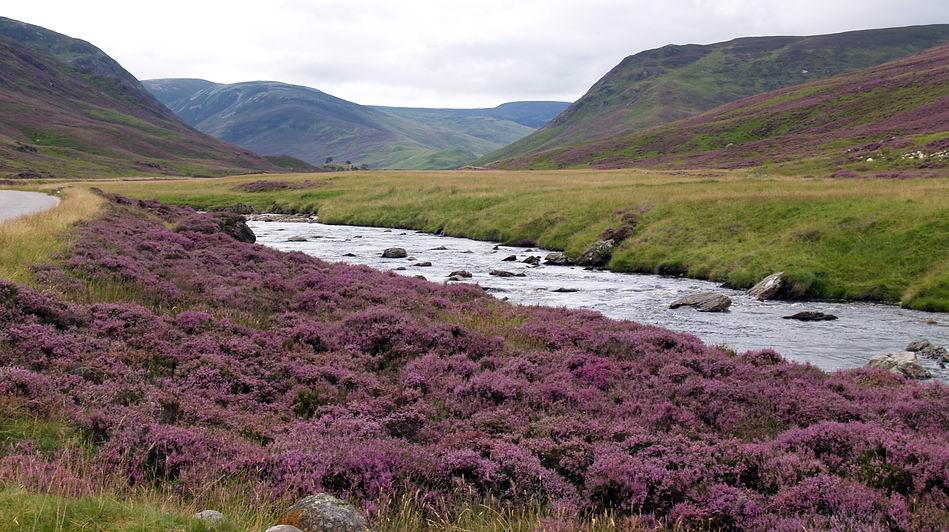
Scottish Mountains with heather
Last weekend we went over the mountains to Pitlochry and what a beautiful journey it was. The mountains covered in blooming heather - Calluna vulgaris - and we watched three Golden Eagles flying overhead as we stopped for a picnic. We kept Lily safely in the car in case the eagles were hungry.
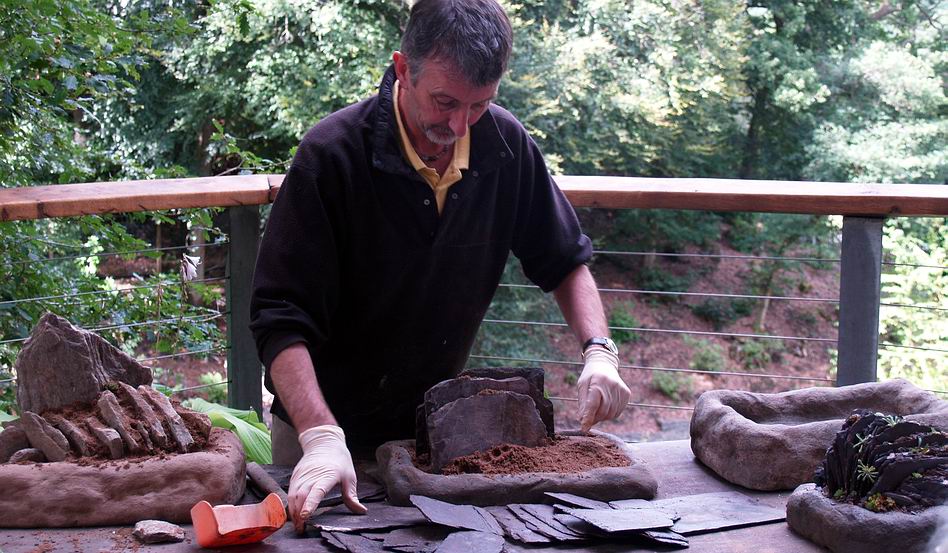
Trough Workshop
The reason for the trip was to give a day's workshop on trough making and planting. We had a very successful day with Sandy Leven giving two Power Point presentations on uses for troughs and plants for troughs while I demonstrated my latest method of how to make a realistic looking stone trough. This was the world wide premier of this method - a new slant on an old method - and I will give more details in a later log.
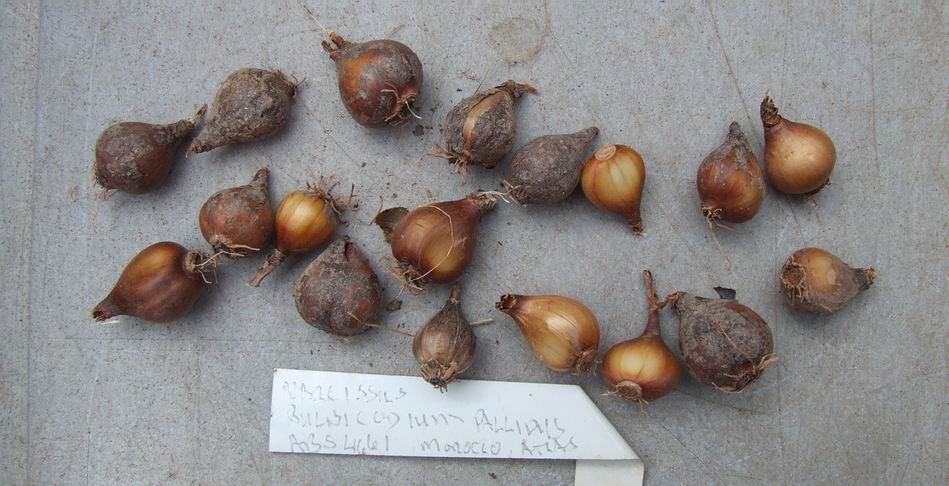
Narcissus bulbocodium pallidus bulbs
Back home and the work has to go on with the re-potting as I am running out of time before the first storm in due. Re-potting is not just the time to refresh the compost but more importantly it is time for a good health check on your bulbs. Check that they all feel nice and firm and that none of them feel soft, which if they are, may indicate a problem. Also take a good look at the skin and look for unusual colouring or blotching. Notice the bulb in the centre that is just over lapping the label and you will see that it is much paler than the others so I decided to inspect it further.
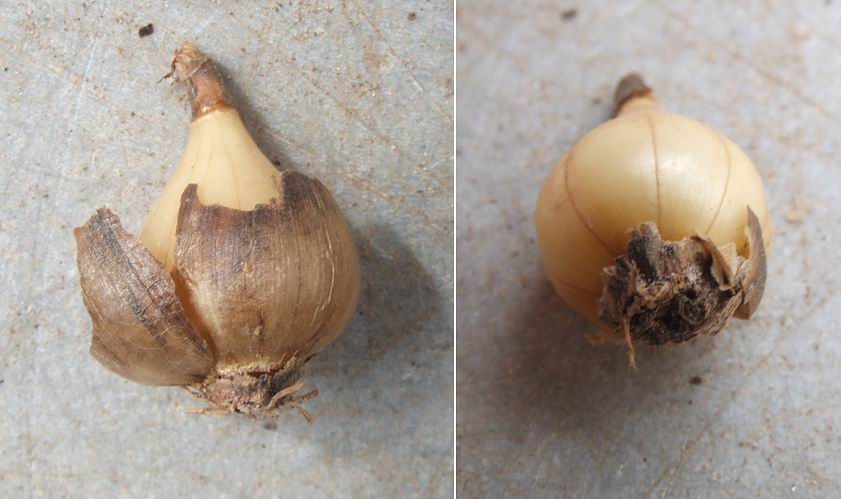
Narcissus bulb with skin
The skin was paler than the others and it also has darkened areas so I peeled it away to see if that discolouration was also on the bulb. In this case the bulb looks fine but I am slightly unhappy with the unusual way the remains of old skins are hardening and remaining attached to the basal plate and if you look carefully you will see the early signs of a silver mould just forming. Just in case this is the early stages of a basal plate rot I have taken the precaution of not replanting this bulb with the other healthy looking ones.
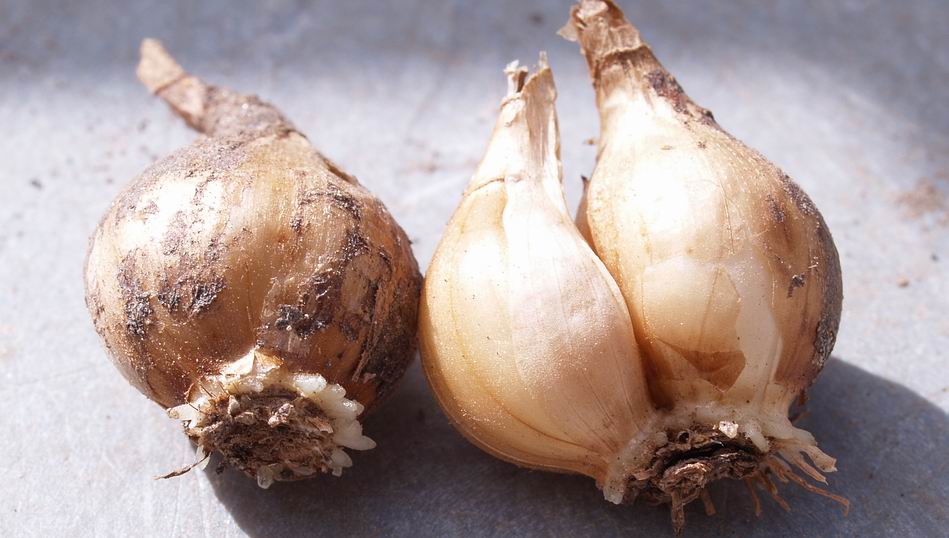
Narcissus bulbs with roots emerging
Into another pot of Narcissus and I find that despite the fact that there is no moisture present the roots are starting to emerge. This is the first stage of growth when the root tips emerge slowly looking for moisture and as soon as moisture becomes available the growth of these roots will speed up and the bulb will get into growth.
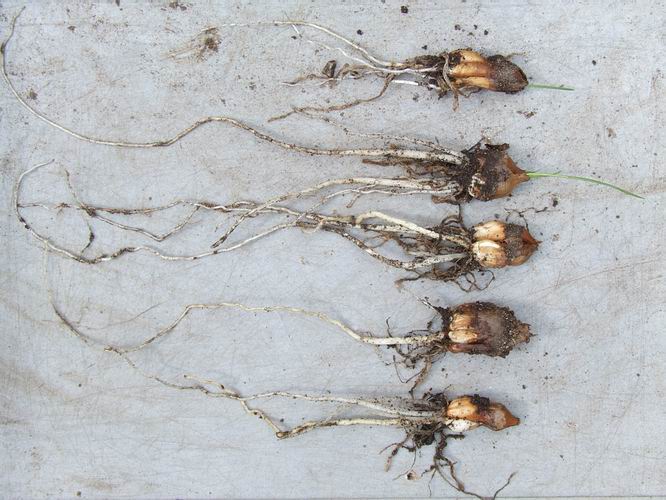
Narcissus bulbs with contractile roots
I have decided that I am too late to re-pot the rest of the Narcissus now so I move out side to some Narcissus wilkommii that I lifted out of a trough I was replanting in May when they were still in full growth. As the bulbs had long roots at that time and I did not want to damage them I placed them in a large plastic pot but the root ball was so extensive the bulbs were sitting on the surface. I have always known that many bulbs elongate and form contractile roots to pull themselves down when they are planted too near the surface but I did not realise just how quickly this can happen.
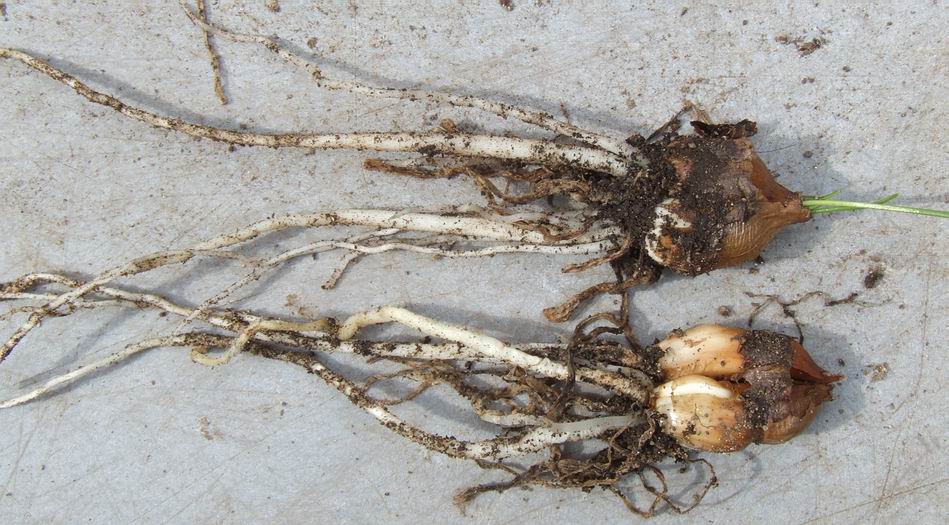
Contractile roots on Narcissus bulbs
These were perfectly normal bulbs shaped in May and already many of them have developed an elongated shape and because they have been outside with plenty moisture available, they have formed extensive contractile roots already.
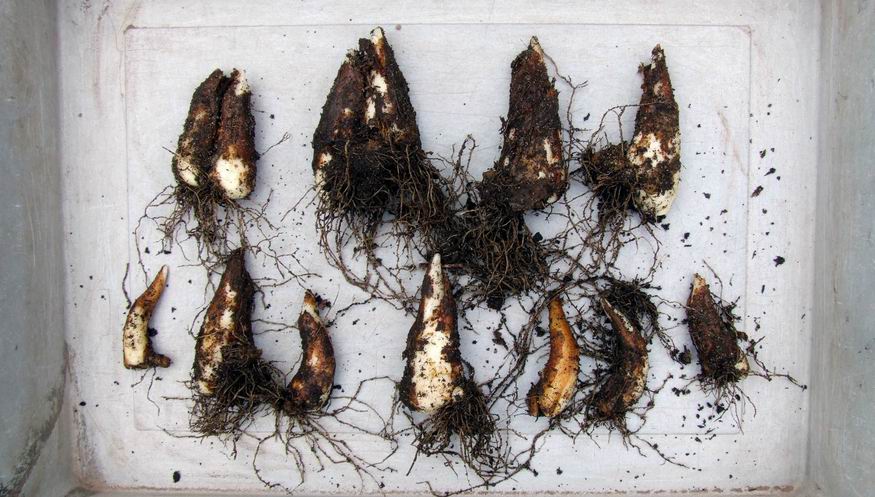
Erythronium 'Johanna' bulbs
I had decided not to disturb most of the Erythroniums but I wanted to refresh the compost on a few that I am anxious to build up and there is no doubt in my mind that they increase quicker if replanted every year. Erythronium 'Johanna' is one of these, it is a hybrid between E. tuolumnense and E. revolutum and I have now enough bulbs to release some into the garden.

Erythronium 'Mini Ha Ha' bulbs
A few people have been asking me for some Erythronium 'Mini Ha Ha' so I also lifted a basket of them to get out some spares.
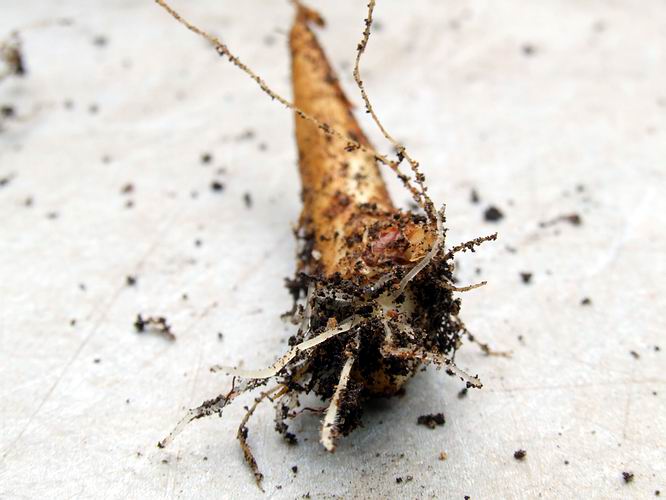
Erythronium bulb with roots
On close inspection I noticed that they were also starting to send out roots so I had to handle them very carefully. I have now resigned myself to the fact that the window of opportunity for me to re-pot the bulbs this year is fast closing.
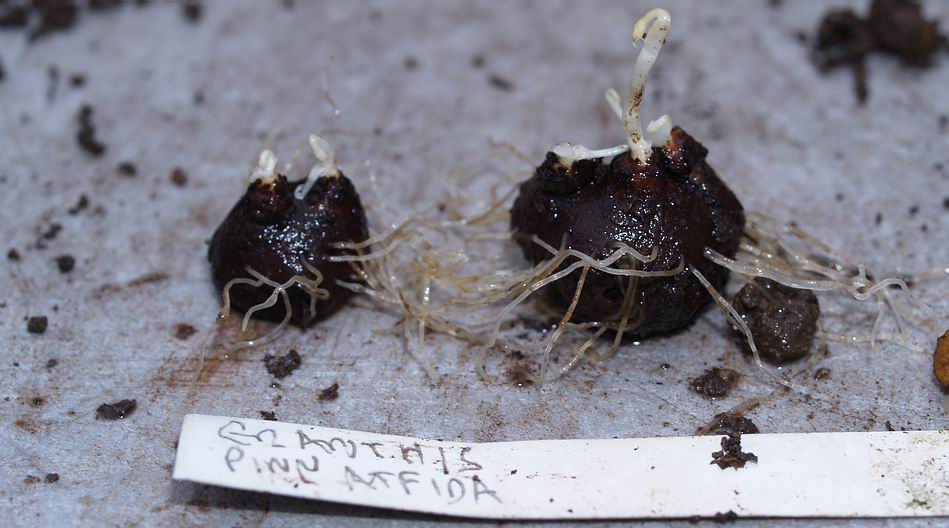
Eranthis pinnatifida corms
One plant I wanted to re-pot was the beautiful Eranthis pinnatifida - but to my surprise its growth was even more advanced. The growth is so advanced that I knocked one stem off the larger of the two corms as I tipped them out of the pot.
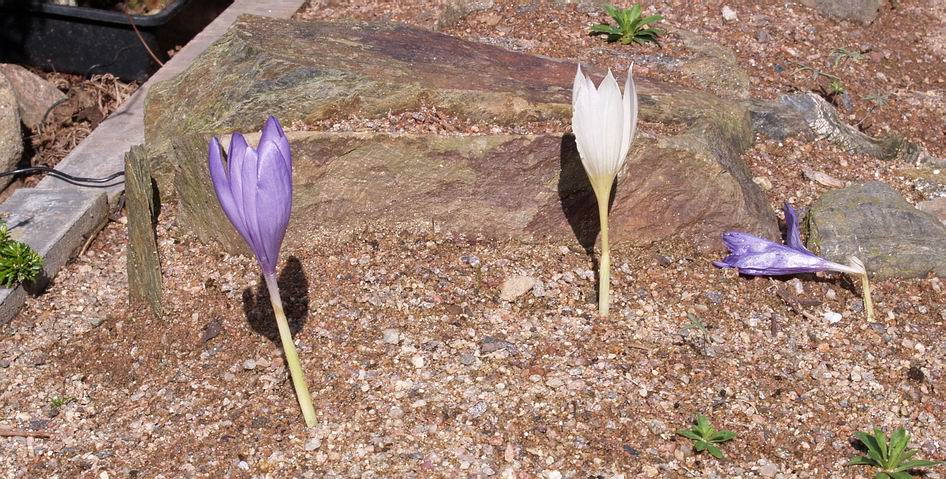
Crocus nudiflorus and vallicola
The season for Autumn flowering crocus is here as illustrated by Crocus nudiflorus and C. vallicola flowering in the new sand plunge bed. These are not late flowering crocus as they are often called but early flowering crocus as they flower months ahead of the other species that keep their flowers tucked up in tight bud until spring.
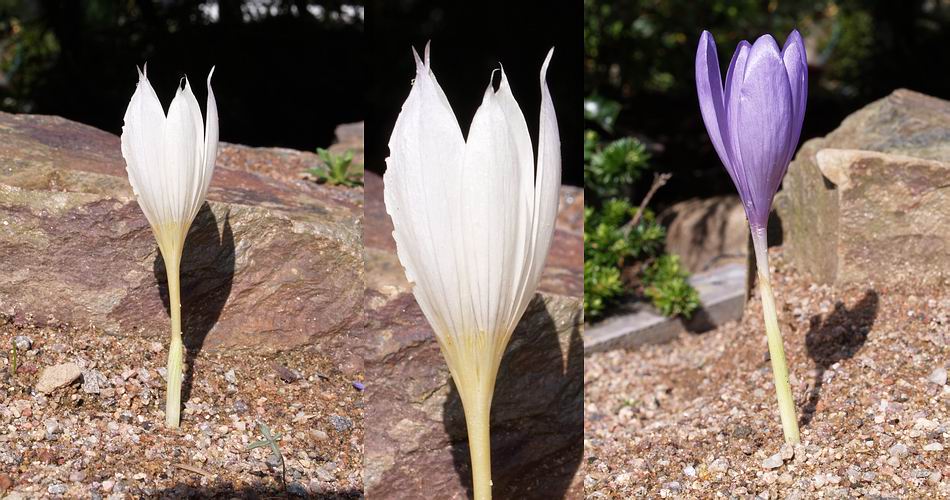
Crocus vallicola and nudiflorus
It was only when I was editing the pictures and I thought I was getting some strange pixelisation on the left hand edge of the Crocus vallicola that I realised that it had been chewed. A quick trip out to inspect the flower showed that something had taken a series of small chunks out of the tepal - most likely a small slug.

Crocus nudiflorus in sand plunge
Over in one of the Erythronium sand plunges a group of escaped Crocus nudiflorus still appear many years after I removed their basket. Crocus nudiflorus sends out small stolons and every time I am working in this bed I remove its corms and still I get more. I am not complaining because I love them and this is like nature's free gift to gardeners as I continue to enjoy these fugitives.
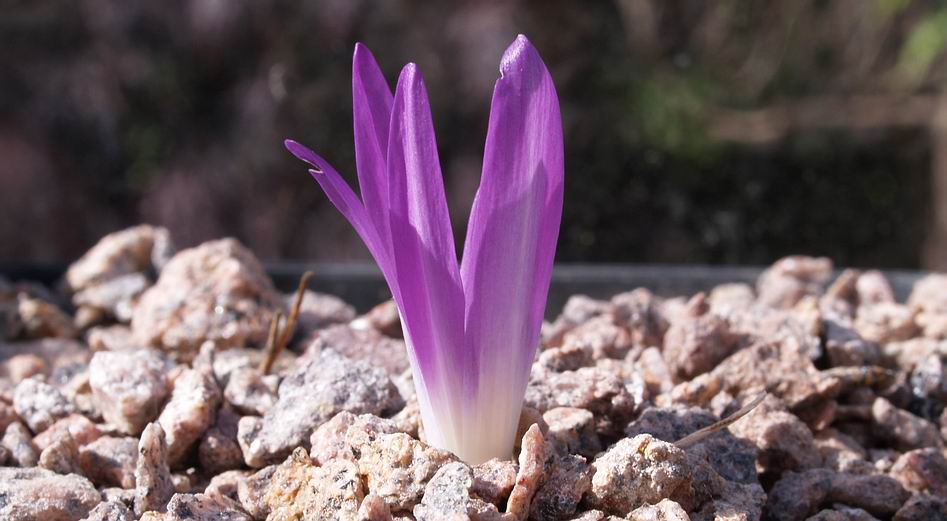
Colchicum montanum
In the bulb house the first Colchicum montanum flower has appeared, formerly called Merendera montana it has now been sunk into Colchicum.
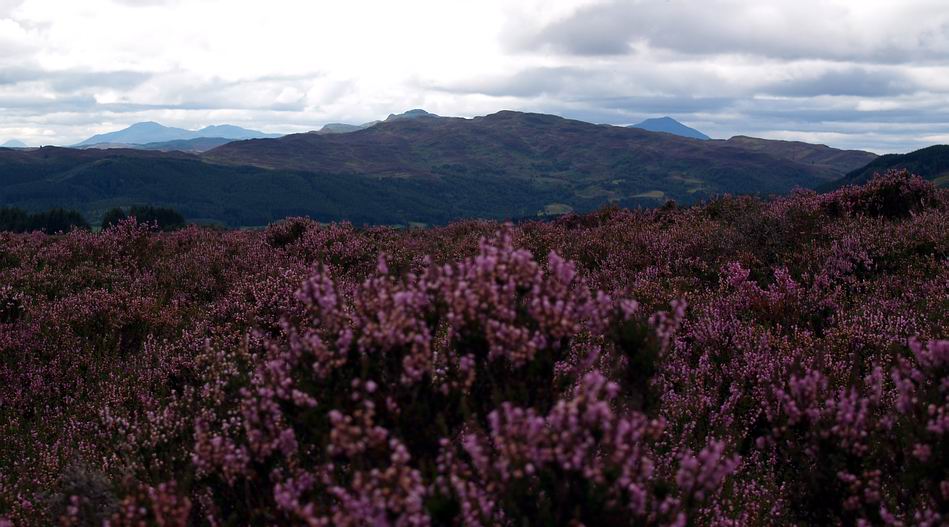
Tummel Valley
I will leave you this week with the view we had as we were just about to drop down into the Tummel valley to Pitlochry.
^ back to the top ^
|

